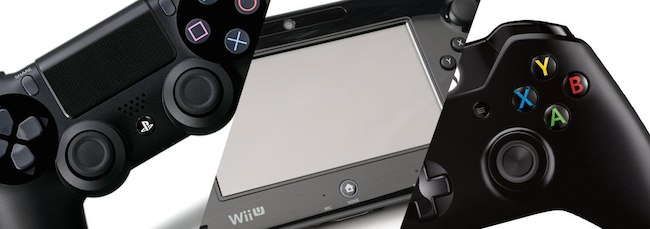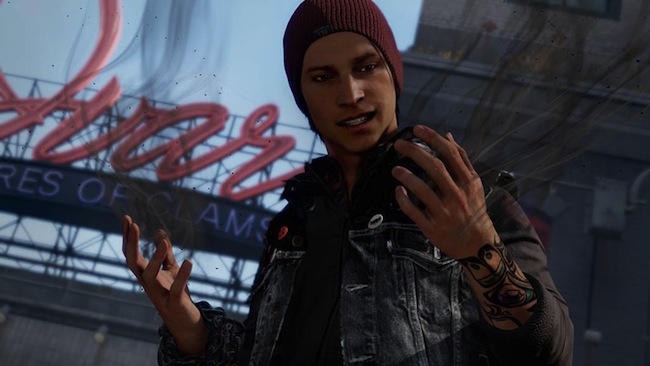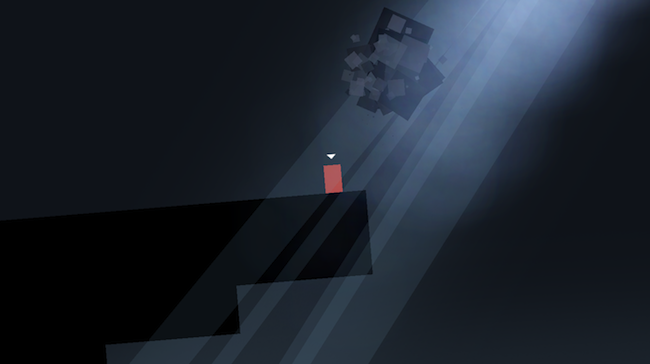
Every time a new generation rolls around, the term “next-gen” is whored throughout the media and PR; even up to 12 months (plus) after the actual launch of a new system. And yet, what does that term even mean? If a new system is out, should it not become “current”? At the beginning of the last generation, consumers had just been introduced to “high-definition” graphics, and with that, there was a major shift in expectations for video games. All of a sudden, it wasn’t a true “next-gen” experience if a game didn’t have the best graphics. And yet, when I think about the word “generation,” I think about moving forward, and learning from the mistakes of our predecessors.
With this preposition in mind, I would conclude that any piece of hardware that proceeds another is “next-gen”; regardless of its physicality or power. However, with that being said, It’s a lot easier to put something physical or mechanical against a scale for comparison; but what about a subjective medium such as video games; one that heavily relies on creativity and artistic vision? Should “next-gen” be defined by the detail of the graphics, the performance of the mechanics, the delivery of the narrative, or the quality of the voice work and music? Should it be an improvement, refinement, or new ideas entirely? What are reasonable expectations for a new generation?

Reviewing a lot of post-launch media for the new generation, I think the biggest controversy is the subject of 1080P & 60FPS. Which, in my opinion, is somewhat refreshing as it was all about hyper-realistic graphics last generation, beginning with games such as Gears of War and Crysis; sometimes inconsequential to the actual performance of the game. And sadly, many games in lieu suffered from poor frame-rates, low-resolution trickery, and screen tearing. As such, I understand why people want to set a clear benchmark for presentation and stability, and while I don’t necessarily share the same concern for individual pixels and frames per second, I absolutely agree that degraded performance should not be acceptable, for any style of game. If it doesn’t run smoothly, it’s broken, and it should be fixed prior to release if consumers are going to pay money for a product.
With that being said, do I think games require better lighting, hyper-realistic textures, and one billion polygons per character? Well, that depends on the vision of the creator. Recently, I played a little indie game called “Thomas Was Alone”, which is a visually simplistic puzzle-platformer with, surprisingly, outstanding writing. It was a genuine evolution of its genre in many ways, despite being so simplistic in its presentation, which to clarify, features a lead-protagonist who is literally just a rectangle. However, due to excellent narration, I actually felt attached to the characters in the game. Naturally, it wasn’t without its share of problems; however, it got me thinking about the term “next-gen”, and how, despite stepping so dramatically backwards, visually, it managed to do so much new. It didn’t require high-end hardware to deliver its vision, which in my opinion, says a lot about the future of gaming.

While hyper-realism is a very exciting concept that we will undoubtedly edge closer to with each generation, I’ve noticed a growing trend that follows all of the visually outstanding launch titles thus far, and that’s the criticism of tired game design and gameplay. For example, it’s hard to deny that Ryse: Son of Rome, an Xbox One exclusive, looks graphically impressive, and yet, it was heavily criticised for being repetitive and uninspired. In truth, I think back in 2006, this game would have been successful on visuals alone, and I’m relieved to see this trend end with consumers and critics, alike, acknowledging the lack of innovative game design in blockbuster titles. As we refuse to accept broken products and uninspired design, the “AAA” industry will have no choice but to accommodate.
In fairness, I appreciate that big studios are afraid to take risks on a product that could fail, especially when there are shareholders to be held accountable to. However, in saying that, I’ve also seen many smaller development teams with significantly less funding, produce great games, priced on “value”, and critically acclaimed in accordance; Gone Home is a great example for this business model. In my opinion, there is a major problem in the games industry, and it’s not increased costs. It’s that all the major publishers want to release the next “Call of Duty”, and as such, inefficiently invest with unreasonable expectations. We, as consumers, are not responsible for poor budgeting, and in turn, shouldn’t be burdened with micro-transactions to recompense for their mistakes.

In my opinion, consumer habits are actively evolving this generation, and in turn, a revolution is in motion. The “AAA” industry won’t necessarily crumble as a result, but thanks to the example of the independent development community, the core consumer is learning that there are better, more honest, ways to enjoy gaming. Several times now, the internet has surged to the forefront with concerns of false advertising for “AAA” games. The surprising thing is that these complaints have not been entirely shallow, or based on the misrepresented graphics themselves, but instead focused on the dishonest approach of the developers behind these games. I admit, some fans may have gotten a little carried away, but the implications are still there, and this is a wonderful thing.
I genuinely believe that players will be the driving force of this generation. Unlike before, we now have the ability to become involved, and to help shape the games industry for the better. There is no other entertainment medium that allows this sort of interaction, and it is also why I believe, in time, this generation of gaming has the potential to become the most creative and innovative yet. There will always be a natural desire for outstanding graphics, but I also believe there is a lot more room for other types of experiences, as well. The indie scene has clearly demonstrated this over the past couple of years, and I think the “AAA” industry will have no choice but to adapt to this changing landscape. Thanks to each of you, I expect that the best games could still be ahead of us.











